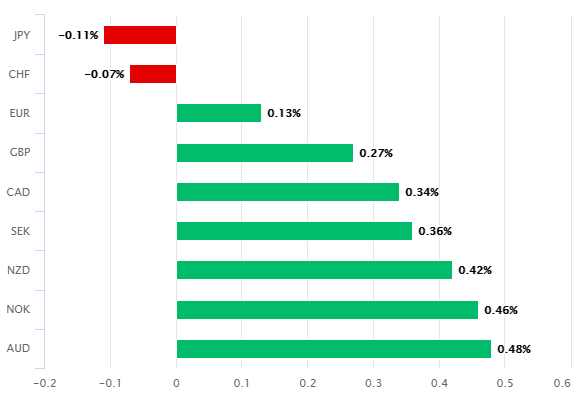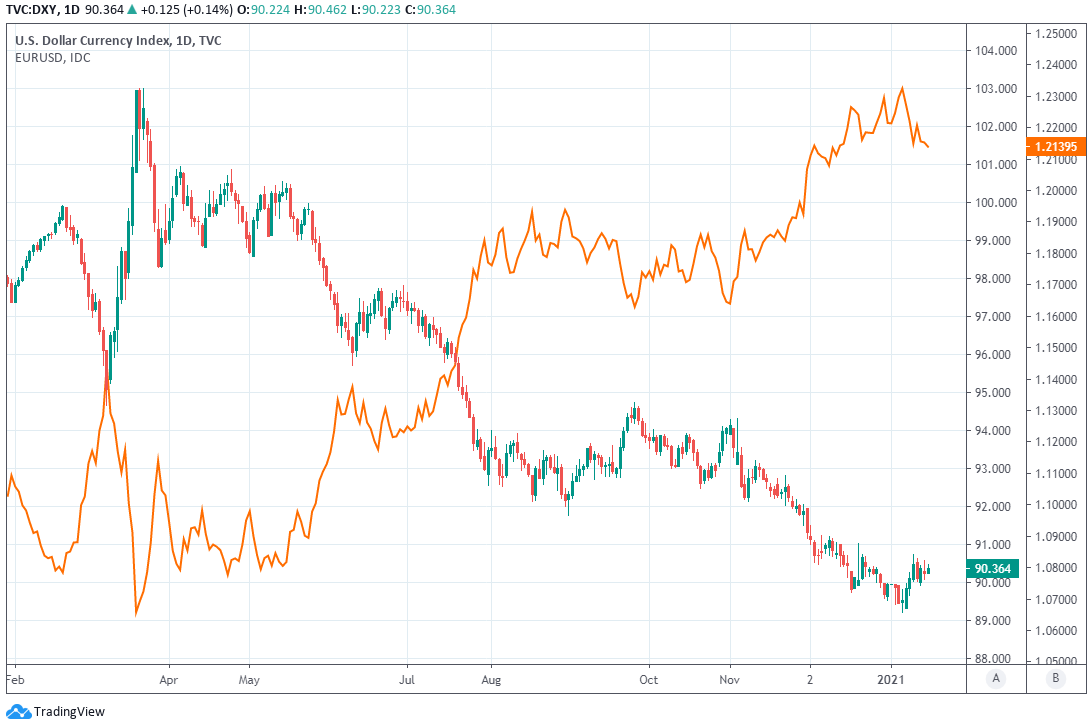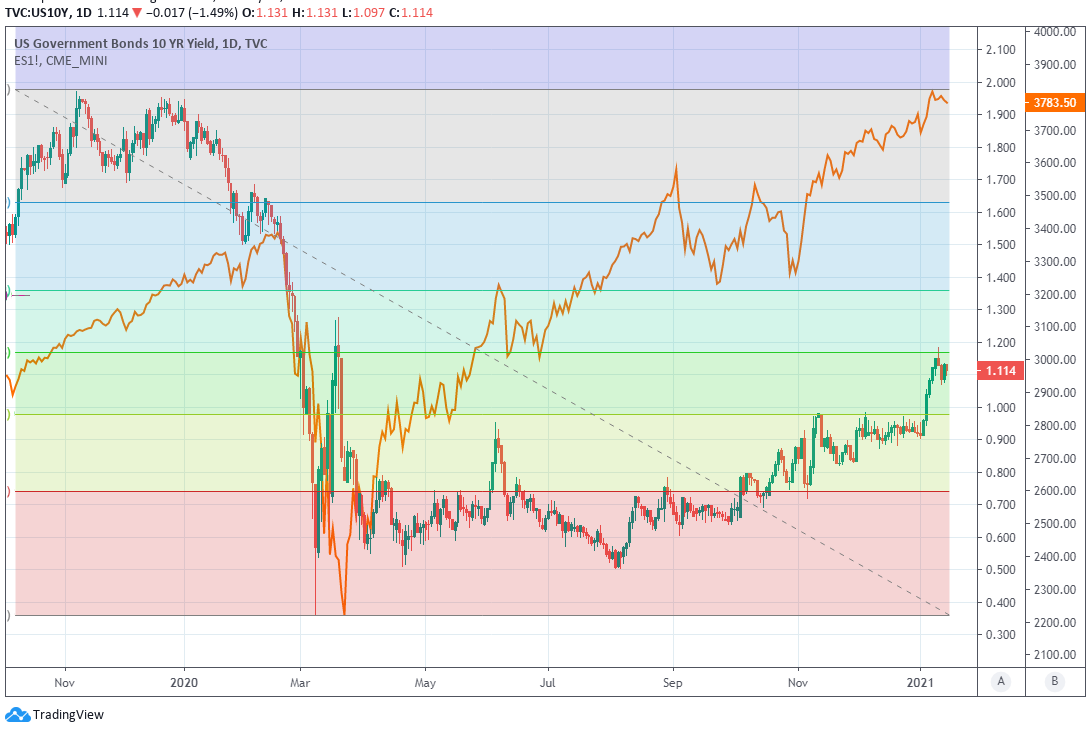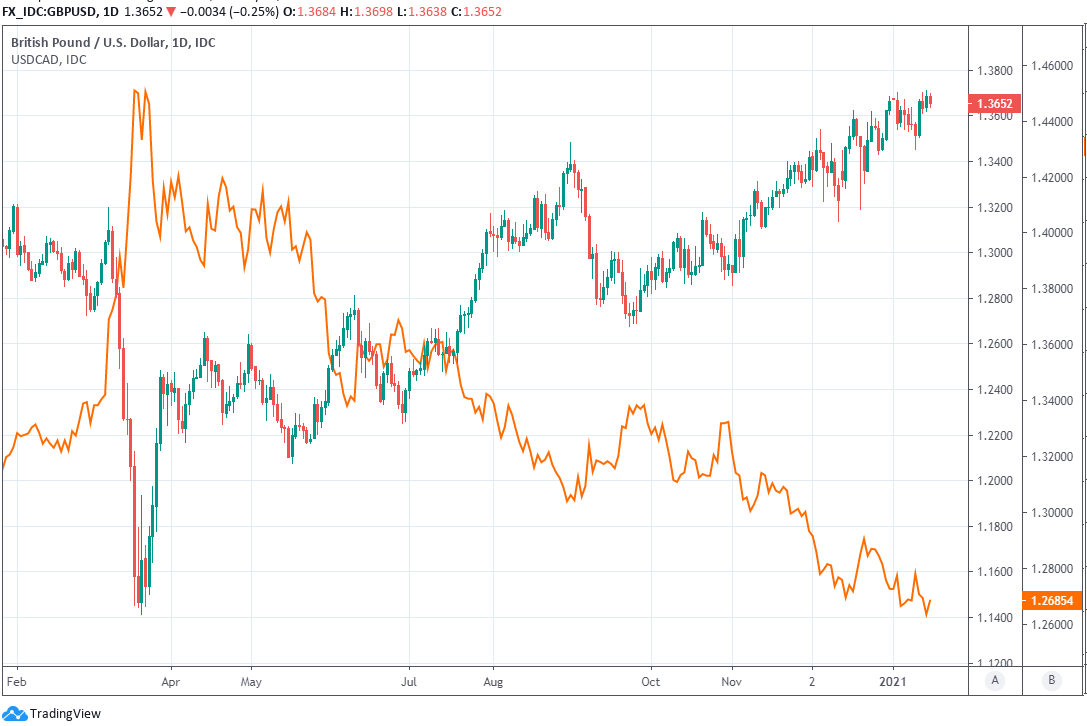U.S. Stimulus May Struggle to Stop U.S. Dollar No Matter What Congress Does
- Written by: James Skinner
- Doubts about stimulus bill passage help drive risk-off USD gains.
- But stimulus to weigh on EUR/USD, support USD index if passed.
- Says DBS as Biden's bill sees US support overtake EU's offering.

Image © The White House
- GBP/USD spot rate at time of writing: 1.3650
- Bank transfer rate (indicative guide): 1.3272-1.3368
- FX specialist providers (indicative guide): 1.3445-1.3554
- More information on FX specialist rates here
U.S. Dollar exchange rates were climbing in a risk-averse market on Friday as investors weighed the prospect of a large U.S. stimulus proposal securing safe passage through Congress, a development that some analysts say would be likely weigh on the Euro and support the Dollar Index.
Dollars were bought ahead of the weekend, leading the greenback higher against all major rivals except fellow safe-havens like the Japanese Yen and Swiss Franc as investors attempted to gauge what President Elect Joe Biden's $1.9 trillion aid proposal might look like once Washington finishes with it.
The proposal was announced late Thursday and offers among other things a minimum wage increase to $15 per hour and a one-time check of $1,400 per household with an income of less than $75,000. This is alongside $400 per-week increase to emergency unemployment benefits intended to run through September and on top of the $600 endorsed in December. It also proposes funding U.S. coronavirus testing and vaccination programmes.
“Assuming that Mr Biden’s plan gets passed, perferably with bipartisan support, the US will be doing more than the EU in addressing the new wave of coronavirus infections and providing support,” says Philip Wee, an FX strategist at Singapore’s DBS Group Research. "The World Health Organization has also called on the EU to do more to curb the new variant of Covid-19. On a relative basis, there will be a need to reassess if the USD Index (DXY) will start to find its footing against its largest component, the EUR.”
Wee and the DBS team say December's USD900bn package already levelled the field between Washington and Brussels in terms of who's doing what to support economies on either side of the Atlantic but that this week's proposed USD1.9tn plan will see Washington pull far ahead of Europe and better enable the U.S. economy to recover. This is flagged as something that could encourage the Dollar Index to stabilise at the expense of the Euro, which has a 57% weighting in the ICE measure of the U.S. currency.
Above: U.S. Dollar Index shown at daily intervals alongside Euro-to-Dollar rate (orange).
The composition of gains and losses across the U.S. exchange rate complex was consistent on Friday with an investor preference for safe-haven currencies over riskier alternatives, a pattern that took hold overnight and with losses against the Japanese and Swiss currencies both being offset for the Dollar Index by declines in EUR/USD.
"The package should get through the House relatively smoothly, but there will be more issues in the Senate," says James Knightley, chief international economist at ING. "The aim is to get this passed before the end of March when several of the special unemployment benefits are ending. However, it may not be straightforward. Joe Biden campaigned as a bipartisan dealmaker and he is going to need all those skills to reach out to enough Republican moderates to get it passed in its current form."
{wbamp-hide start} {wbamp-hide end}{wbamp-show start}{wbamp-show end}
Dollar gains came alongside declines for U.S. stock futures and European cash equity markets as well amid widespread contemplation of whether Joe Biden's stimulus bill will be able to avoid dilution as it traverses a Congress where the incoming administration and Democratic Party have only a fragile majority. However, and in some respects Biden's bill was already less 'reflationary' than many in the market had anticipated due to earlier expectations had been for Washington's next round of one-time cheques to be in the region of $2,000 rather than $1,400, which could've encouraged profit-taking in risk assets like stocks and non-safe-haven currencies.
"USD bears, who had been hoping for more of the same from 2020, find themselves up against a steeper US yield curve in a global reflation story that could now include the US economy, not just China," says DBS' Wee. "Although Mr Powell pushed back recent talk about an early exit from loose monetary policy, Goldman Sachs lifted its end-year forecast for the US 10-year bond yield to 1.50% from 1.30% on stronger reflation expectations." 
Above: U.S. Dollar performance against major currencies on Friday. Source: Pound Sterling Live.
"Investors see higher rates, less central bank support as the single biggest threat to risk assets. Tapering talk terrifies," says Ralf Preusser, CFA and a rates strategist at BofA Global Research, in reference to the results of BofA's FX and Rates Sentiment Survey.
Stock markets and risk currencies got little relief from investors' newfound caution on Friday even after Federal Reserve Chairman Jerome Powell appeared to succesfully halt a sell-off in the U.S. government bond market that had been driven by a combination of expectations for better support of U.S. households and suggestions from some of the bank's policymakers that they could find themselves engaged in a discussion about tapering off the Fed's bond buying programme as soon as year-end.
"We doubt 10-year yields will drop notably from here and hence the Fed will continue to play an important role in curtailing the upward pressure on long-term rates," says Derek Halpenny, head of research, global markets EMEA and interenational securities at MUFG. "Even with “exuberant” spending and rising inflation later this year, Powell argued that it would still not be the time to alter policy. While short-term, the US dollar could extend further, the big picture backdrop for the dollar remains negative."
Above: 10-year U.S. government bond yield with Fibonacci retracements of 2020 fall and S&P 500 index futures (orange).
Powell told an audience on Thursday that the Fed will not raise interest rates in response to "hypothetical" inflation threats in this recovery. If nothing else his remarks were an expression of tolerance for price pressures that could rise above the bank's 2% target for price growth and further undermine the market for U.S. government bonds in the months ahead. Powell also said “now is not the time to be talking about exit," from its quantitative easing programme.
Investors had feared a 2021 discussion about tapering off the bank's $120bn per month bond buying programme if the economy performs better than anticipated, which would lift bond yields and risk pulling the rug out from under the stock markets. This would lift the U.S. Dollar in turn, although despite Powell's efforts the risk-averse price action that dominated on Friday still acted as a headwind to a Pound-to-Dollar exchange rate that fell from recent highs near 1.37.
"President-Elect Biden has proposed an initial USD1.9 trillion package. Yet it is comprised of several elements that have already been rejected, even by at least one Democratic senator, or which do not have the numbers to pass the Senate without Republican support," says Michael Every, a global strategist at Rabobank. "Some of this will need 60 votes in the Senate for procedural reasons, when the Democrats only have 50 and VP Harris as the deciding vote. Nonetheless, the government needs to spend more – because otherwise what are the Fed going to keep buying? (And they ARE going to keep buying.) The US 10-year yield reaction has been mixed: we are currently around 1.11%, but there is no sign of a further surge on the back of the Biden stimulus news."
Above: Pound-to-Dollar exchange rate shown at daily intervals alongside USD/CAD (orange).







